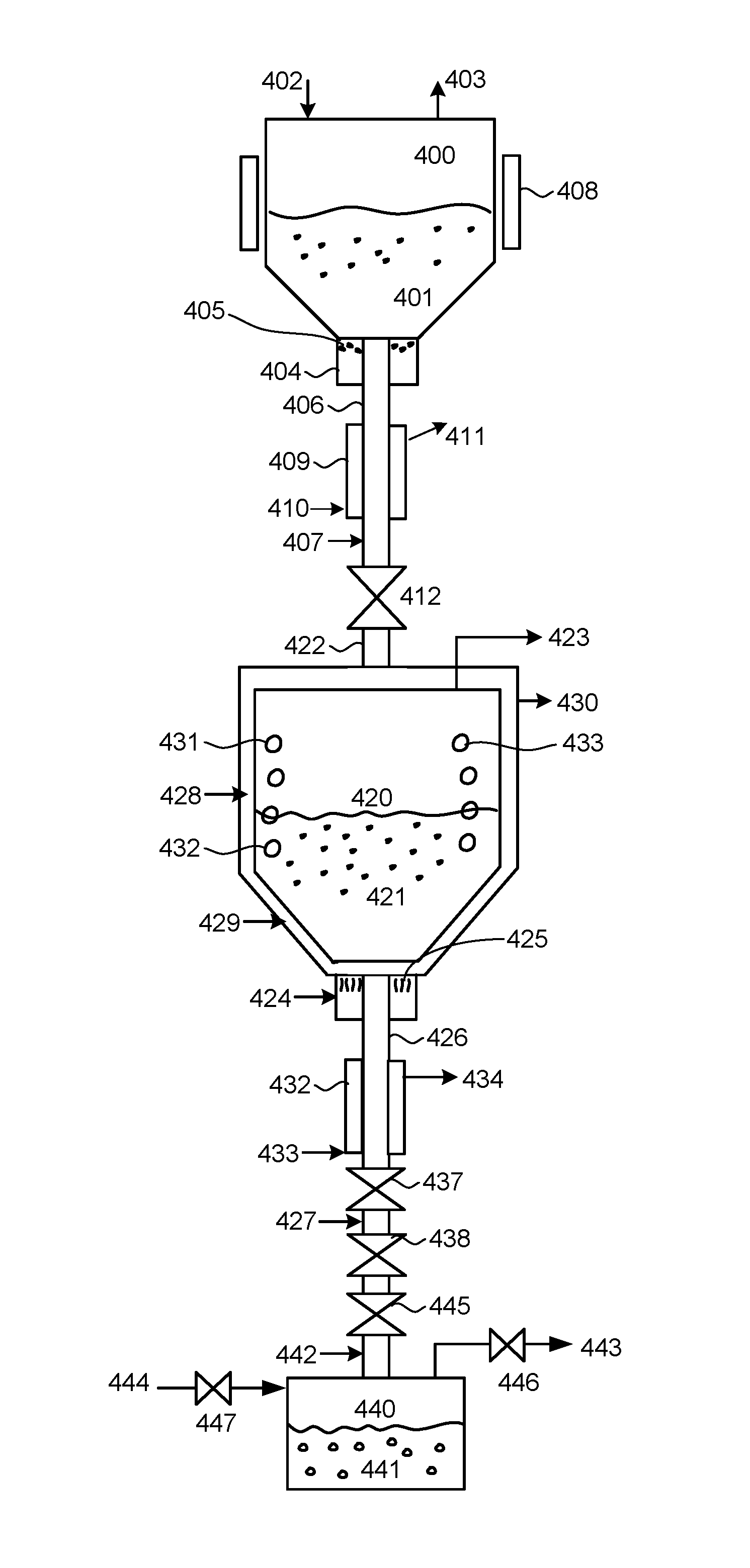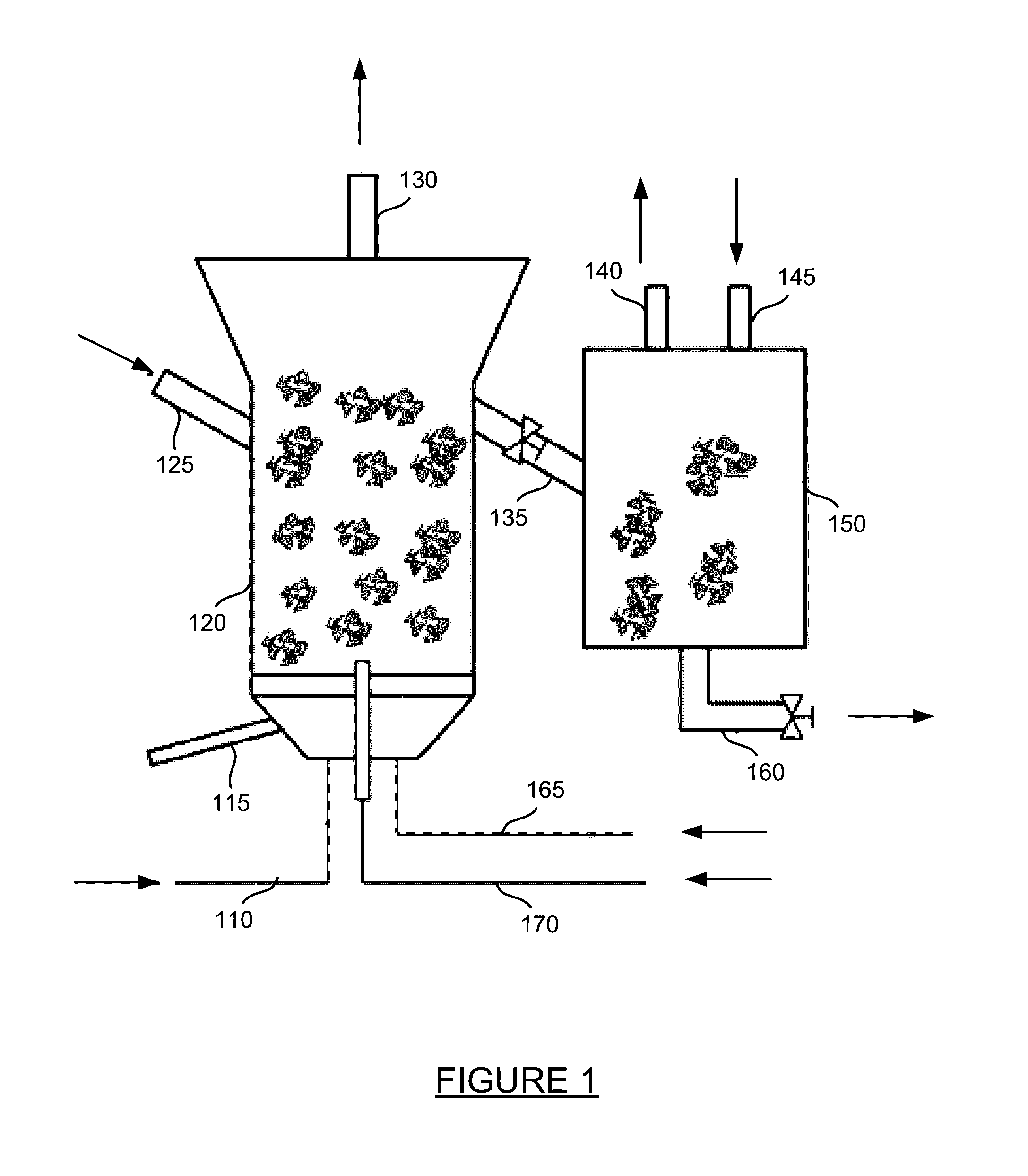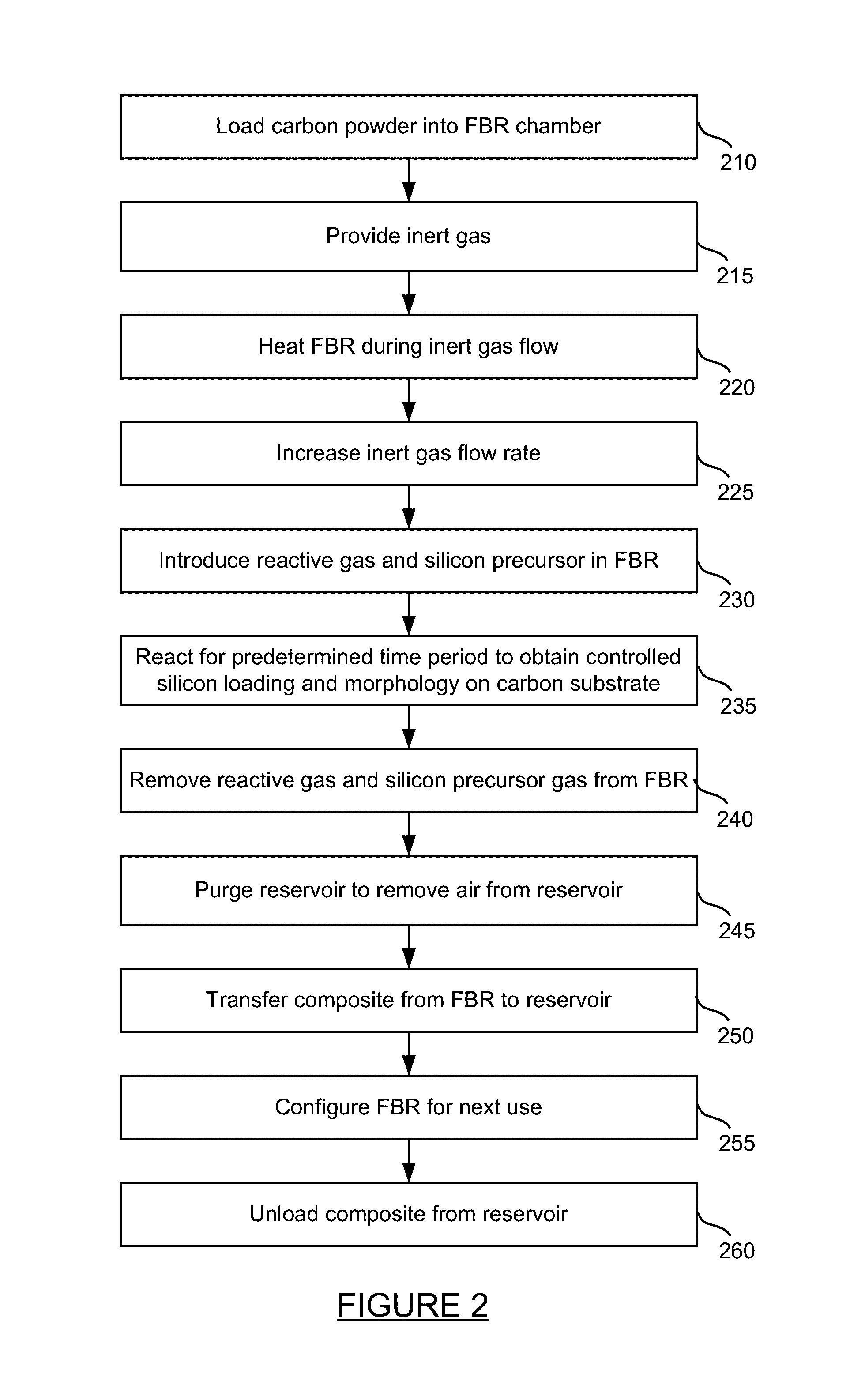Apparatus and process for semi-continuous and multi-step composite production
a composite material and semi-continuous technology, applied in the field of lithium ion batteries, can solve the problems of large-scale batch process inefficiency, long down time, and substantial technical challenges to the use of libs in consumer electronics, automobile and energy storage applications, and achieve the effect of different morphology and properties, and different applications of polysilicon
- Summary
- Abstract
- Description
- Claims
- Application Information
AI Technical Summary
Benefits of technology
Problems solved by technology
Method used
Image
Examples
Embodiment Construction
[0028]A high temperature fluidized-bed reactor and process produces a silicon (Si) composite anode material that can be used to substantially increase lithium battery specific capacity (2,000 mAh / gr+) compared to traditional graphite anode materials (375 mAh / gr) used in most lithium batteries today. In the apparatus, Silicon particles are deposited, bonded, and uniformly embedded in graphite / graphene based multi-layered nano-platelets to form a stable and commercially scalable silicon composite anode material. The silicon composite anode material may be used for lithium batteries in consumer electronic devices, electric vehicles, and energy storage systems for renewables. This apparatus, process, and material has demonstrated great potential for dramatically improving energy density, reducing cell size and weight, all while lowering levelized costs of lithium batteries.
[0029]The present technology produces silicon-carbon composite materials through a chemical vapor deposition proces...
PUM
| Property | Measurement | Unit |
|---|---|---|
| width | aaaaa | aaaaa |
| width | aaaaa | aaaaa |
| bed temperature | aaaaa | aaaaa |
Abstract
Description
Claims
Application Information
 Login to View More
Login to View More - R&D
- Intellectual Property
- Life Sciences
- Materials
- Tech Scout
- Unparalleled Data Quality
- Higher Quality Content
- 60% Fewer Hallucinations
Browse by: Latest US Patents, China's latest patents, Technical Efficacy Thesaurus, Application Domain, Technology Topic, Popular Technical Reports.
© 2025 PatSnap. All rights reserved.Legal|Privacy policy|Modern Slavery Act Transparency Statement|Sitemap|About US| Contact US: help@patsnap.com



